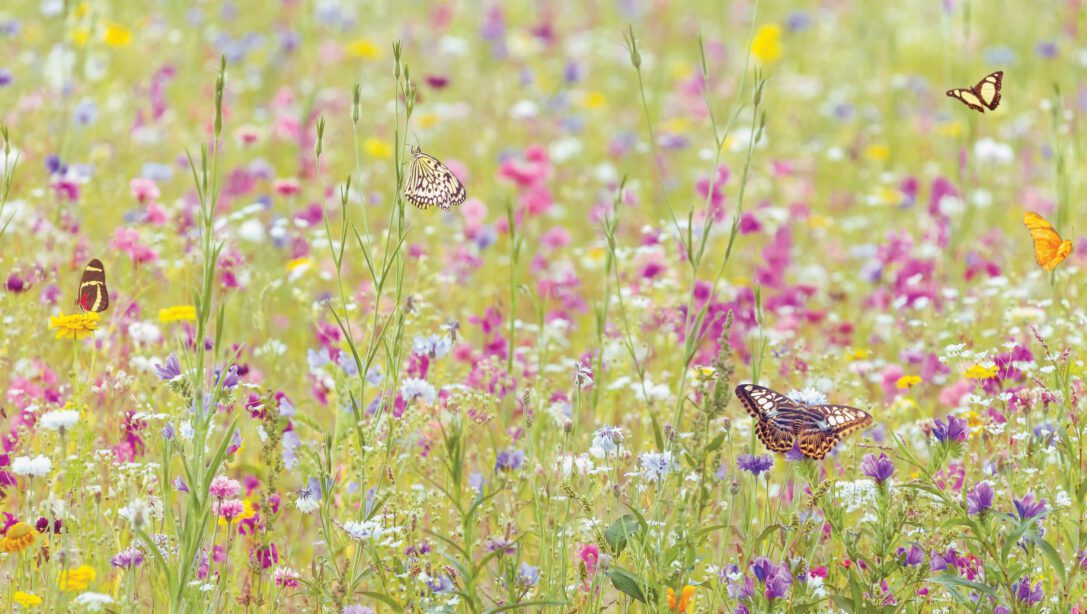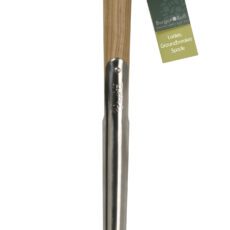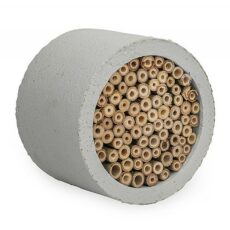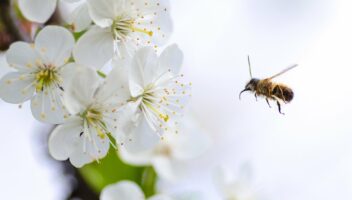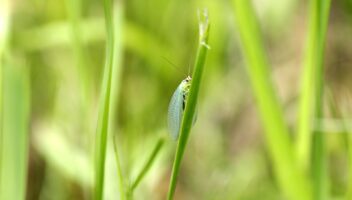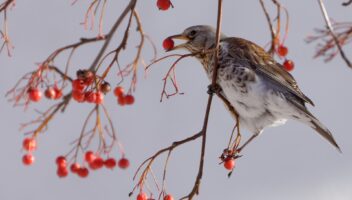With wildlife species and natural habitats in decline, caring gardeners quite often ask us; “how can we do more to create a wildlife haven in our own garden?”
There are many ways we can help with our own pieces of the natural world, no matter the size of our plot. For those with a little more space, turning a section of your garden into a wildflower meadow is a fantastic way to attract insects and, in turn birds and other small animals.
According to the experts at RSPB, since the 1930’s we have lost more than 99% of ‘unimproved grasslands.’ Here, they share advice for creating a section with a similar feel to these missing habitats, and how to create a wildflower meadow in your garden.
RSPB Guide to Creating a Wildflower Meadow in Your Garden
1. Understand what a wildflower meadow is
A wildflower meadow is a grassy area filled with wildflowers – as opposed to a fertile bed filled with poppies. The best type of soil for this is unproductive due to (initially) nutrient depletion or erosion which has a negative impact on plant growth and productivity.
2. When to begin your wildflower meadow
The ideal time to create your wildflower meadow is in the autumn.
3. Choose the right spot for your meadow
The best situation for your wildflower meadow is somewhere open and sunny. As large a space as you can give is best to allow for a range of flowers to grow, but any area is better than nothing. You may decide to give over an area of existing lawn, or perhaps convert an old flower bed.
4. Strip the soil to reduce fertility
As gardeners, we are used to trying to make the quality and fertility of our soil as good as possible. For once, with our wildflower meadow, we can celebrate poor soil! If you have been looking after your soil and adding fertiliser over the years, the best way to undo this work ready for your wildflower meadow is to remove the top three to six inches of topsoil.
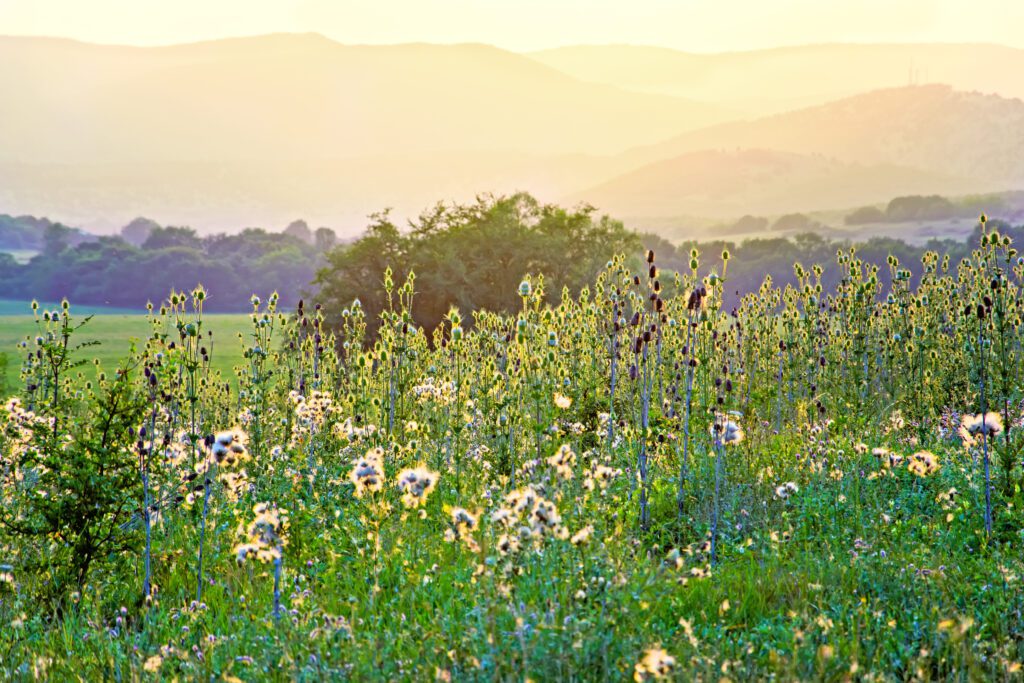
5. Prepare the soil and weed
Once you have removed the top layer of soil, dig it over until you have a fine tilth (soil that looks like breadcrumbs). Then, lay black plastic over the soil to allow any weeds to naturally germinate and die.
6. Sow your wildflower seeds
Scatter your chosen wildflower seed mix evenly across the ground as you walk. Try to walk one way and then at a right angle across the area for even coverage. A good volume to aim for is five grams of seed per square metre of meadow. It is advisable to pre-mix the seed with dry silver sand (not builder’s sand) – three to five parts sand to one-part seed.
It is not necessary to rake the seed or cover over with soil; just gently walk across the seed once scattered.
Water well until it has established.
Recommended wildflower seed mixes:
Birds-foot trefoil, common sorrel, cowslip, field scabious, greater and common knapweed, meadow buttercup, ox-eye daisy, red clover, wild carrot and wild grasses
7. Meadow management
In the early Summer trim and cut growth and remove any dead material, this will encourage better growth the following year.
For future seasons only mow your wildflower meadow in your garden during the autumn and possibly once in early spring. You may want to remove excess nettles, dock and thistles. Leave your wildflower meadow to grow and do not mow from April through to the end of summer. In dry weather use grass shears to cut the hay. Once this has dried, it can be added to your compost pile.
Each year you should see more and more life in your wildflower meadow; bees, butterflies, birds and more. It is a little bit of work to begin with and a change from the usual tidy approach to gardening, but it can soon become one of the most exciting spots in the garden.
Your Wildflower Meadow Toolkit:
- Wildflower seed mix
- Spade
- Gardening gloves
- Black plastic sheeting (optional)
- Grass shears


